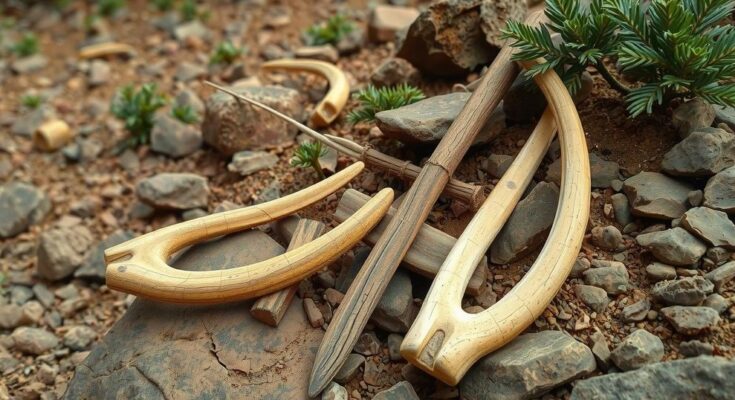Researchers have discovered the oldest known human-made bone tools, dated at 1.5 million years in Tanzania. These tools, crafted from elephant and hippo bones, showcase early human cognitive advancements in tool-making and adaptation from stone to bone. This discovery predates previously known shaped bone tools by a million years, reshaping our perception of human evolution.
In a groundbreaking discovery, researchers have found the oldest known human-made bone tools, dating back approximately 1.5 million years at Olduvai Gorge in Tanzania. These tools, crafted from the leg bones of elephants and hippos, predate previous shaped bone tools by nearly one million years, fundamentally changing our understanding of early human intelligence and creativity.
The research, led by Ignacio de la Torre, a Paleolithic archaeologist from the Spanish National Research Council, demonstrates that early hominins employed a technique called “knapping,” traditionally used for stone tool production. This method involves striking one stone to create sharp edges, illustrating significant cognitive advancements as early humans adapted these skills to work with bone materials.
De la Torre remarked, “The hominins who made these tools knew how to incorporate technical innovations by adapting their stone-working knowledge to bone. This finding reflects advances in their cognitive abilities and mental structures.” The team analyzed 27 bone fragments, confirming that these tools were crafted through deliberate shaping by hominins rather than resulting from natural processes or scavenger activities.
The crafted tools vary in length, with elephant bone tools reaching 8.6 to 15 inches and hippo bones measuring between 7 and 11.8 inches. Likely serving heavy-duty purposes, they were used for processing animal carcasses. Although the specific hominin species responsible for these tools remains uncertain, both Homo erectus and Paranthropus boisei inhabited the area during that time, indicating that these early humans were innovating with bone tools much earlier than previously thought.
Renata Peters, co-author of the study and an archaeologist at University College London, expressed enthusiasm about the find: “We were excited to find these bone tools from such an early timeframe. It shows that human ancestors were capable of transferring skills from stone to bone, a level of complex cognition that we haven’t seen elsewhere for another million years.”
The discovery of the oldest known human-made bone tools at Olduvai Gorge represents a significant shift in our understanding of early human cognitive abilities. This finding highlights the innovative capacities of early hominins, revealing their ability to adapt stone-working techniques to new materials, and provides insight into the processes of human evolution well before the development of more recognizable stone implements.
Original Source: caliber.az




